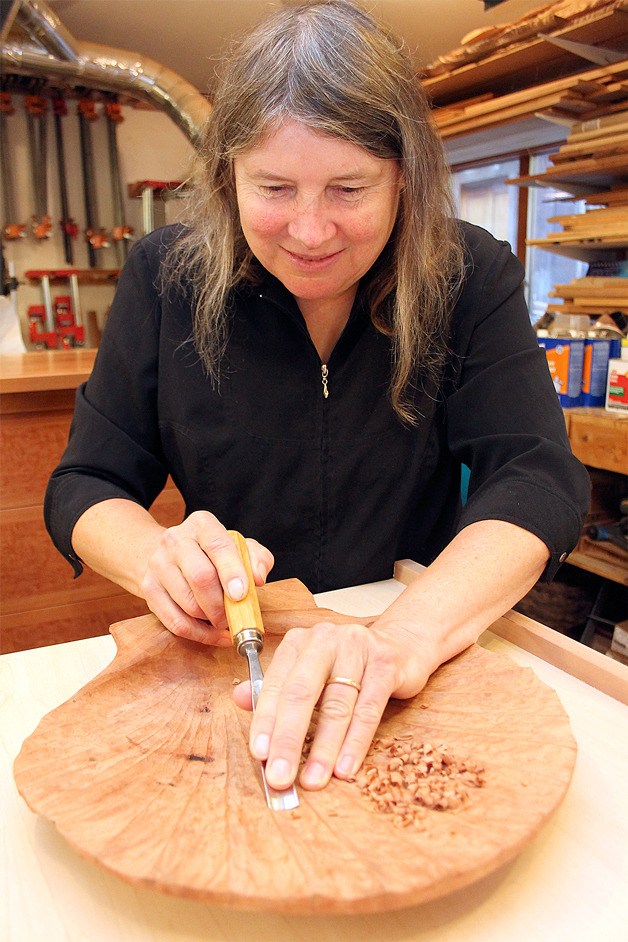Everyone has heard the complaint that nothing is made in America any more.
The few dozen members of the Whidbey Island Woodworkers Guild beg to differ and are ready to show off what their hands have wrought from American lumber at the upcoming 12th annual Woodpalooza.
The free woodworking showcase in Whidbey Island Center for the Arts’ Zech Hall next weekend features 16 Whidbey Island woodworkers’ bowls, clocks, dressers, guitars, tables, trunks and other wood creations.
In its 12th year, the festival is sticking with its goal of being an exhibit for the professional and the amateur, and giving a glimpse into the life of woodworking as a viable career. The analog work is fighting for recognition in what some see as an ever-increasingly digital world that sprints to become more modern.
“When we decided to do Woodpalooza years ago, (there) was a huge emphasis to show young folks what this is all about, how to make a living doing that,” said Gary Leake, secretary for the Whidbey Island Woodworkers Guild and a professional woodworker for 20 years.
“By and large, those that have a talent, especially the younger ones, are pressured to go off to college and give it a try,” he said.
A husband and wife team of professional woodworkers know that statement for fact. Bruce and Christine Schwager, who live in the Langley/Freeland area of East Harbor Road, embody as a couple the form/function balance and scope of Woodpalooza.
Both studied and received architecture degrees from the University of Washington. They quickly acknowledged that they wanted to work with their hands, and more than with just a pen or pencil.
Bruce Schwager makes everyday, functional pieces such as dressers, tables, chairs and benches. Christine Schwager does more wood carving, creating textured bowls, panels and doors, favoring form.
“They’re meant to be used, but not in a dishwasher,” Bruce Schwager said.
While technically all of the bowls she makes can serve their functional purpose, some of them are more decorative and high forms of art than others. One she will exhibit at the show, based on a baby’s ear shell, features a wave of the wood’s grain, which would be otherwise covered if something were put into it.
“We make things that are very carefully thought through and made to last a long time,” Bruce Schwager said inside their shared shop, just steps from their home looking out over Holmes Harbor.
Their home, unsurprisingly, is almost entirely wood. The majority of the building’s structure and accents were made from trees felled on their property, including a madrona used in one of their doors that features an intricate carving done by Christine Schwager.
Demonstrating her technique in the workshop, Schwager glides a gouge (a type of chiseling tool) across a piece of walnut. She had worked on the pink scallop-inspired bowl for a while. With the basic shape and grooves already in place, finding the right depth to reflect the tiny ridges of an actual shell was a matter of feel for Schwager as she ran the tool down a groove.
Like Michelangelo, Donatello, Bernini or Rodin, wood carvers see the shape and design where others may only see a weathered stump or burl.
“A particular piece of wood that’s really unusual tells you what it wants to be,” Christine Schwager said.
The Schwagers, some of the original founders of the woodworkers guild and Woodpalooza, acknowledged that not everyone is ready to spend big bucks on a handmade table. But their argument for why their work, and the work of all their fellow woodworkers, is worth it was that all pieces made by hand are truly unique and, like the wood, have a story.
Things are being made in America after all, and they’ll be on display next weekend.



